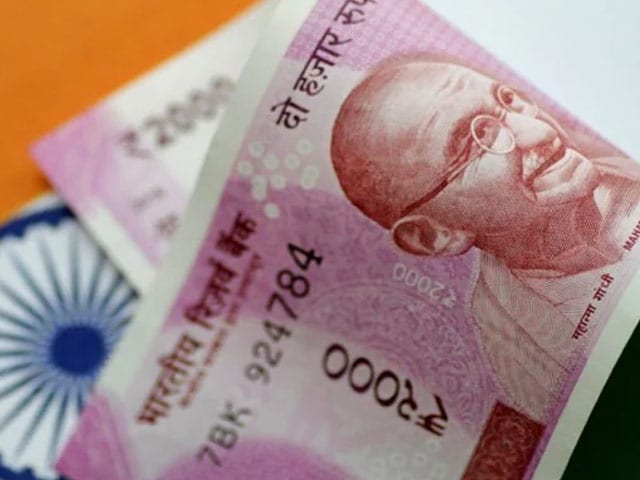The economic survey (2021-22) has projected a growth rate of 8 per cent to 8.5 per cent in 2022-23. The document was tabled by finance minister Nirmala Sitharaman in Parliament on Monday, ahead of the presentation of the Union Budget tomorrow on February 1.The projected GDP growth for the forthcoming fiscal is based on oil price projection of $70-75 per barrel range as against the current price of $90, the economic survey said.The economy’s growth rate projected by the survey for the forthcoming fiscal though is lesser than the 9 per cent rate of growth for 2022-23 projected by the International Monetary Fund (IMF).The economic survey has projected GDP growth rate of 9.2 per cent for the current fiscal (2021-22), which was also estimated by the National Statistical Office (NSO) earlier this month in its first advance estimates of economic output. It is also higher than IMF’s 9 per cent growth projection for the current fiscal, but lesser than RBI’s 9.5 per cent growth forecast for 2021-22.”Advance estimates suggest that the Indian economy is expected to witness real GDP expansion of 9.2 per cent in 2021-22 after contracting in 2020-21. This implies that overall economic activity has recovered past the pre-pandemic levels,” the survey noted.Almost all indicators show that the economic impact of the “second wave” in the first quarter of the current fiscal was much smaller than that experienced during the full lockdown phase in 2020-21 even though the health impact was more severe, it said.The report further said that all macro indicators point towards the fact that the economy was well placed to face challenges, helped by pick ups in farm and industrial output growth.At the same time though, the document, which sums up the state of the overall economy, said that the global environment still remains uncertain, hinting at the impact of the Coronavirus pandemic and the Omicron threat.”At the time of writing, a new wave in the form of the Omicron variant was sweeping across the world, inflation had jumped up in most countries, and the cycle of liquidity withdrawal was being initiatedby major central banks. This is why it is especially important to look at India’s macro-economic stability indicators and their ability to provide a buffer against the above stresses,” the survey said.On a positive note, the document said that government finances could witness consolidation in 2021-22 after uptick in deficit and debt indicators during pandemic year of 2020-21.It also said that robust export growth and availability of fiscal space will ramp up capital spending, which will support growth in the next fiscal (2022-23). The survey indicated that private sector investment is expected to pick up with financial system being in a good position to provide support for economic revival.The economic survey 2021-22, has detailed the state of different sectors of the economy as well as reforms that should be undertaken to accelerate growth. At the same time, it has focussed on supply-side issues to improve the resilience of the economy.Focussing on the agriculture sector, the economic survey suggested that there is a need to improve productivity of small and marginal farmers through small holding farm technologies.It further advocated that crop diversification towards oilseeds, pulses and horticulture needs to be given priority.On a broader basis, the economic survey said that agriculture and allied sectors have been the least impacted by the Pandemic and the sector is expected to grow by 3.9 per cent in 2021-22 after growing by 3.6 per cent in 2020-21.Advance estimates suggest that the gross value added (GVA) of industry (including mining and construction) will rise by 11.8 per cent in 2021-22 after contracting by 7 per cent in 2020- 21, it said.The services sector has been the hardest hit by the pandemic, especially segments that involve human contact. This sector is estimated to grow by 8.2 per cent in the current fiscal, following last year’s (2020-21) 8.4 per cent contraction.Total consumption is estimated to have grown by 7 per cent in 2021-22 with significantcontributions from government spending.Similarly, gross fixed capital formation exceeded pre-pandemic levels on the back of ramped up public expenditure on infrastructure.Exports of both goods and services have been exceptionally strong so far in 2021-22, but imports also recovered strongly with recovery in domestic demand as well as higher international commodity prices.Referring to inflation trends, the economic survey said that it reappeared as a global issue in both advanced as well as in emerging economies, as the surge in energy prices, non-food commodities, input prices, disruption of global supply chains, and rising freight costs stoked global inflation during the current fiscal.In India, consumer price index (CPI) or retail inflation moderated to 5.2 per cent in 2021-22 (April-December) from 6.6 per cent in the corresponding period of 2020-21.It was 5.6 per cent (YoY) in December 2021, which is within the targeted tolerance band, the document said. The decline in retail inflation in 2021-22 was led by easing of food inflation.The survey however noted that wholesale price inflation (WPI) has been running in double-digits. “The inflation in ‘fuel and power’ group of WPI was above 20 per cent reflecting higher international petroleum prices. Although the high WPI inflation is partly due to base effects that will even out, India does need to be wary of imported inflation, especially from elevated global energy prices,” it cautioned.
ABOUT US
Sach News® - raising the voice of people of Jammu Kashmir since 1940. We are Publishing House of Daily Sach (Urdu Daily). Sach News, is one of the Oldest News Group of India having its office in Jammu Kashmir, Delhi. Reach us for Latest news on politics, sports, crime, education, real estate, business entertainment and much more. We provide you with the latest breaking news and videos straight from the ground zero.
Contact us: [email protected]
© Sach News Network 2011-2024 | Maintained by Sach Info Tech


